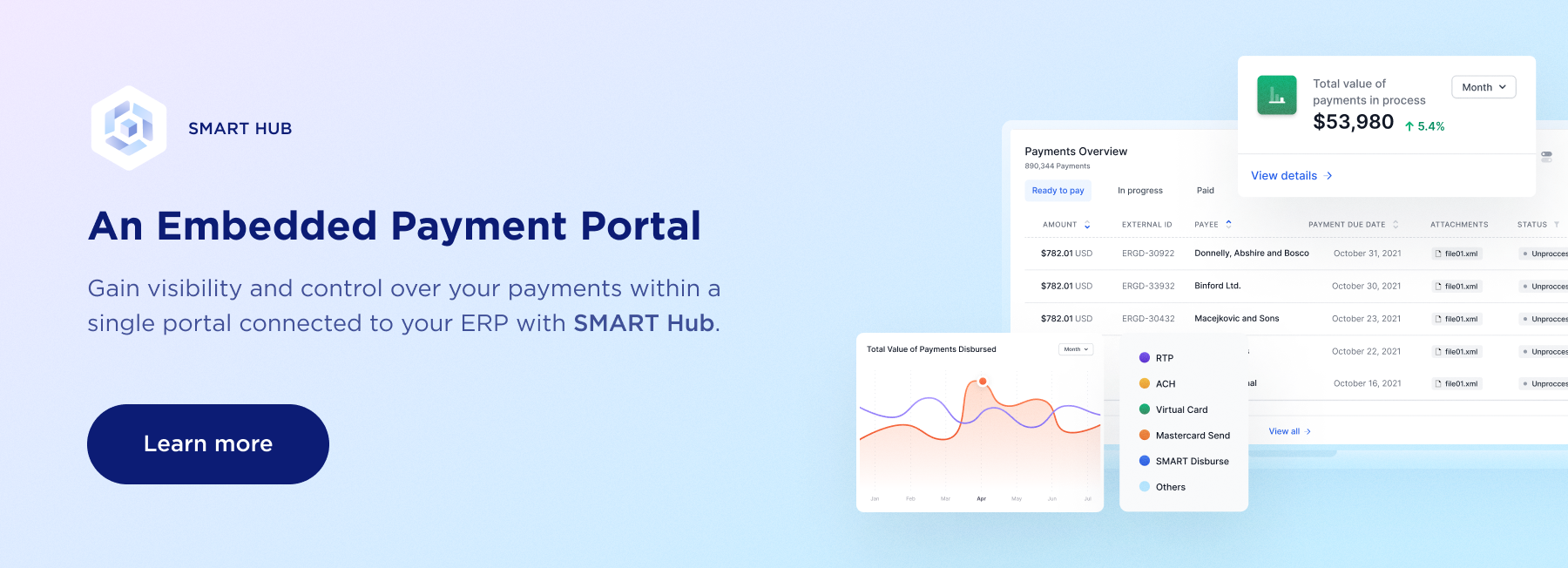Stop me if you think you have heard this one before:
Electronic payments will solve the challenges faced by accounts receivable professionals.Has the Impact of Electronic Payments Reached its Potential?
Accounts receivable professionals have long been told that electronic payments would facilitate the seamless receipt and flow of payments and remittance data, without human operator intervention.
Things have not worked out that way for most accounts receivable departments.

The Problem
![]() Remittance data is not standardized
Remittance data is not standardized
![]() Remittance data is frequently incorrect if it’s provided at all
Remittance data is frequently incorrect if it’s provided at all
![]() Staff must search remittance advices for critical data such as invoice numbers or PO numbers
Staff must search remittance advices for critical data such as invoice numbers or PO numbers
![]() Remittance advices might include data such as reference IDs that make no sense to the biller
Remittance advices might include data such as reference IDs that make no sense to the biller
![]() Remittance advices often arrive decoupled from electronic payments, sometimes days apart
Remittance advices often arrive decoupled from electronic payments, sometimes days apart
![]() Global businesses must manage multiple currencies, banks, systems, payment types and more
Global businesses must manage multiple currencies, banks, systems, payment types and more
Accounts receivable departments make matters even worse by processing customer payments and applying cash using a mix of manual processes and loosely integrated systems, many with their own logins and passwords, account requirements, file formats, and complicated proprietary integrations.
As a result, accounts receivable departments spend a lot of time hunting down remittance advices, matching payments with remittance advices, manually keying data, juggling multiple workflows (such as for lockbox payments, checks, and ACH and wire transactions) and resolving exceptions.
When businesses receive remittance advices with their payments, there’s no guarantee that they will post cleanly. Receivables departments must rely on time-strapped IT resources to map the data on remittance advices, ACH payment records and the file formats delivered by bank lockbox providers.
All this creates downstream problems, particularly in collections and customer satisfaction.
Achieving the Promise of Seamless Payments with Embedded Solutions
It is for these reasons that more accounts receivables departments are planning to embed payments solutions in their legacy software and enterprise resource planning (ERP) applications. Leading embedded payments solutions have integrated with more than 90 different ERP applications.
.png?width=70&name=think%20(1).png)
The Solution
Embedded payments solutions allow users to disburse or collect payments from within a single system with familiar screens and with just a few clicks of the mouse.
No wasted time
No multiple logins to manage
No data silos
No customer frustration from delayed or late payments
Payments also can be made or received through a payment network. Payments and rich remittance detail electronically flow between the systems of buyers and suppliers fast, accurately, and touch-free.
How Embedded Payments Streamline Receivables
Embedded payments and embedded ERP payment solutions are a game-changer for receivables:
![]() Buyers can make and receive electronic payments in the way that works for them.
Buyers can make and receive electronic payments in the way that works for them.
![]() A centralized business directory tracks supplier payment terms and preferences and makes it easy and secure for customers to onboard suppliers and begin paying them electronically.
A centralized business directory tracks supplier payment terms and preferences and makes it easy and secure for customers to onboard suppliers and begin paying them electronically.
![]() Real Time Payment (RTP) and other transaction types expedite B2B and B2C payments.
Real Time Payment (RTP) and other transaction types expedite B2B and B2C payments.
![]() Rich remittance details are uploaded directly to a supplier’s ERP, eliminating the burden of keying data and applying cash and wiping out posting delays that can jam up lines of credit.
Rich remittance details are uploaded directly to a supplier’s ERP, eliminating the burden of keying data and applying cash and wiping out posting delays that can jam up lines of credit.
![]() Buyers and suppliers can instantly see the status of payments and historical payment details.
Buyers and suppliers can instantly see the status of payments and historical payment details.
![]() Payments are reconciled in real-time, improving reporting and speeding the financial close.
Payments are reconciled in real-time, improving reporting and speeding the financial close.
![]() Treasury connectivity is improved, and data and payment silos are eliminated.
Treasury connectivity is improved, and data and payment silos are eliminated.
Embedded payments help address the big challenges in today’s electronic payments environment.
None of this is possible when payments operate standalone from ERPs and other legacy software.
Ready to automate the way your business processes payments and applies cash?





